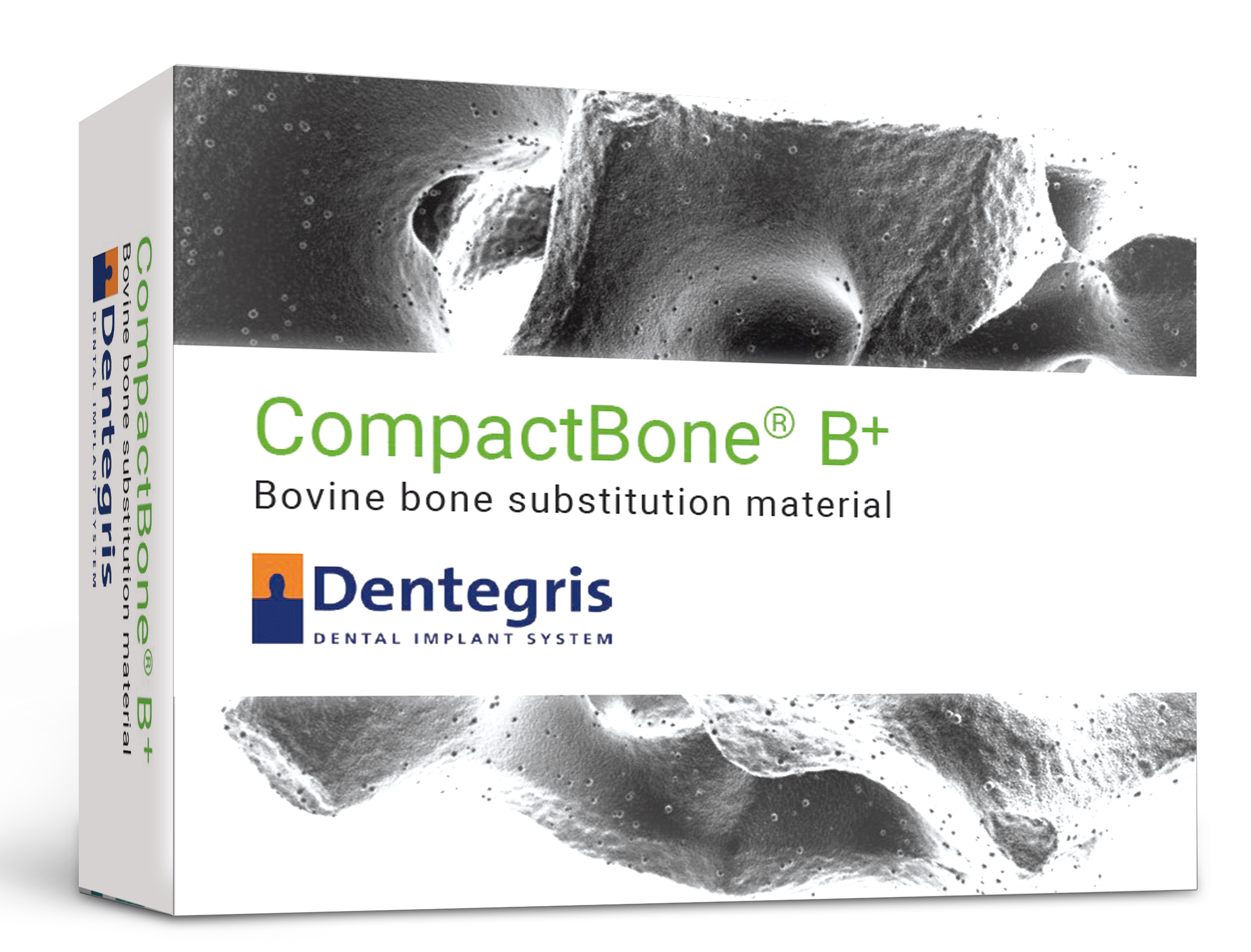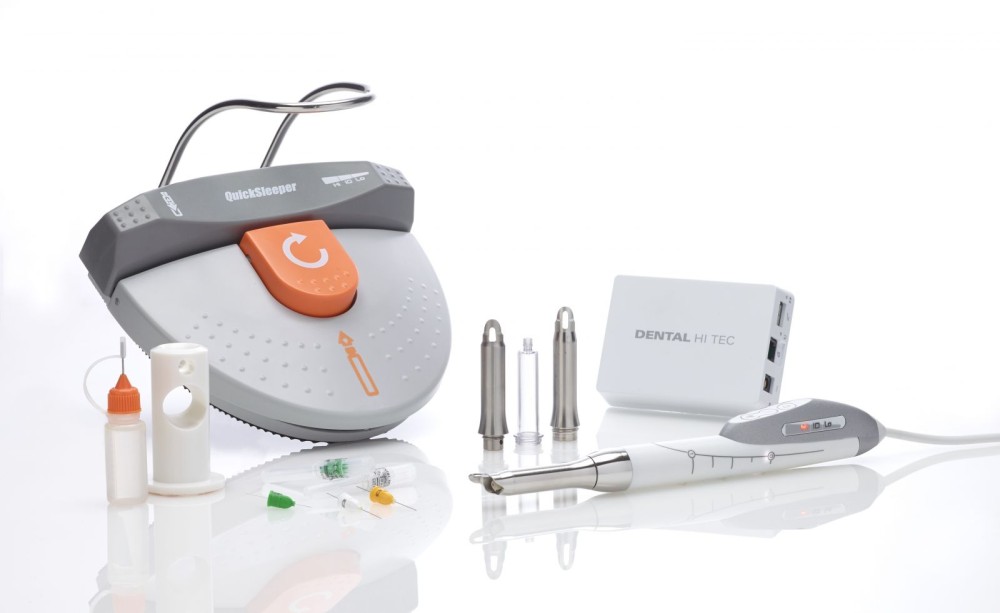Authors:
Dr. Guillaume Couderc *. AHU (guillaume.couderc2 @wanadoo.fr)
Dr. Gauthier Weisrock *. AHU (gauthier.weisrock @caramail.com)
Dr. Hervé Tassery*. PU-PH (herve.tassery @numericable.fr)
Restorative Dentistry and Endodontics Department. Odontological Center. Marseille
Fig. 1: Pulpitis on mandibular molars is the most difficult clinical situation to manage in terms of anesthesia.
Fig 2: Intraosseous anesthesia allows anesthetizing several teeth; the number of teeth anesthetized is dose dependent.
In dental emergencies, the use of local anesthesia for the treatment of pain of endodontic origin has an increasing failure rate. The team of the Department of Restorative Dentistry and Endodontics of University Hospital in Marseille completed a prospective clinical study in order to evaluate the effectiveness of the intraosseous anesthesia with the QuickSleeper ® system after failure of «classical» anesthesia.
Treating pain in the management of dental emergencies is a challenge for the clinician, particularly when this pain is related to endodontic pathology. In fact, if local or regional anesthesias (Inferior Alveolar Nerve Block at the mandibular foramen) give very good results for planned dental care on an asymptomatic tooth, with success rates ranging from 75 to 90% (1), the failure rate of these same anesthesias significantly increases in case of irreversible pulpal or peri apical inflammation. Thus, clinical studies have reported that an IAN block anesthesia alone was ineffective in 30 to 80% of the cases after diagnosing a pulpitis on mandibular molars (2, 3, 4) (Fig. 1).
Several assumptions have been formulated to explain the mechanisms of these failures (5), among which:
- the anatomical variations and complexity in tooth innervation;
- the phenomenon of tachyphylaxis (reduction of the response to a pharmacological substance related to previous injection of the same substance);
- the effect of inflammation on the ambient pH: the inflammatory acidosis in tissues maintains a high proportion of anesthetic molecules in an ionized form, making them unable to cross the plasma membrane of cells and therefore unable to block sodium channels;
- the effect of inflammation on blood circulation: the vasodilatation induced by the mediators of inflammation leads to a decrease in the concentration of local anesthetics;
- the effect of inflammation on the reactivity of the nociceptors, resulting in their hyper excitability.
- psychological factors (fear and anxiety cause hypersensitivity);
- a poor mastering of the anesthetic technique: if all of the above factors may explain failures, it seems that a low technical expertise is a frequent cause of inadequate analgesia after an IAN block anesthesia at the mandibular foramen.
Thus, taking into account the clinical difficulty to achieve effective anesthesia in emergency situations, this parameter being added to the inexperience of the students working in university hospitals, the objective of this prospective study was to evaluate the effectiveness of supplemental intraosseous anesthesia with the QuickSleeper ® system after failure of conventional anesthesia (IANB or supra periosteal anesthesia) performed by a student. In addition to the quality of the analgesia, the number of needles and cartridges necessary for each anesthesia as well as the satisfaction of the patient were evaluated.
This clinical evaluation lasted six months and was conducted in the “Unité Fonctionnelle Gaston Berger – APHM – Pôle odontologique” in Marseille.
Material and method
A group of 25 patients were recruited for this study. All these patients came and consulted at the Emergency Department.
Criterion for inclusion in the study: failure of the primary anesthesia performed by a student.
Criterion for exclusion: six cartridges had already been injected, regardless of the technique.
After ascertaining the failure of the first anesthesia by the impossibility of carrying out the surgical procedure for easing the patients’ pain, a supplemental transcortical anesthesia was performed by an instructor with the QuickSleeper ® (anesthetic formulation with 1: 100 000 epinephrine). 23 parameters related to the realization of transcortical anesthesia were measured (number of needles, cartridges, needle fractures …) in addition to the possibility of a pain free treatment: all of these were recorded in a clinical form for each patient. Anesthesia was considered successful if the whole therapeutic procedure could be completed and considered a failure if this had not been the case.
Transcortical anesthesia: a reminder
In transcortical anesthesia, the injection is done directly in the cancellous bone through the cortical plate (Fig. 2). In the mandible, diffusion occurs mainly in a mesial direction from the injection point; it is advisable to place the injection distal to the tooth to be treated. Following the injection, the anesthetic solution diffuses in the medullary spaces; the number of teeth affected by the anesthesia depends on the amount of solution injected. Intraosseous anesthesia is done in three steps. Mucous anesthesia is made in the attached gingiva, with a few tenths of a millimeter of needle depth penetration. The perforation of the cortical plate is totally painless, as the cortical bone is not innervated. The intraosseous penetration of the needle must never exceed 4 to 5 mm in the mandible. The solution can then be slowly injected.
Results and discussion
During this evaluation, the success rate of the supplemental transcortical anesthesia was 100%: for every patient, the adequate surgical procedure could be completed without necessitating any further anesthesia.
Distribution of pathologies and anesthesias
| Diagnosis | Pulpal hyperemia | Pulpitis | Other |
| Repartition | 12 | 11 | 2 |
| Transcortical anesthesia | 17 | ||
| PDL anesthesia | 8 | ||
| Upper VS lower teeth | 11 VS 24 |
Failures of the primary anesthesias concerned almost exclusively lower molars, since in this sector, the thickness of the cortical bone makes supra periosteal anesthesia totally ineffective and requires a remote injection (IAN block) which can have inconstant results, especially for a student, as we previously noted.
On average, the student had injected 3 to 4 cartridges and had used 3 needles, because the instructor had often been called for help in after an IANB, one supra periosteal and one PDL anesthesia. Conversely, with the intraosseous technique, injecting just 3/4 of a cartridge on average was enough to get a deep and immediate anesthesia which instantly relieved the patient.
Events related to the use of the QuickSleeper ®
| Impossibility to perforate the cortical plate | Changing the needle | Needle fracture | Clogging of the needle | Labial soft tissue anesthesia | Needle purging |
| 3 | 1 | 1 | 5 | 3 |
The use of QuickSleeper ® proved to be reasonably easy after a learning period which is necessary to mastering of the technique.
The system is extremely reliable since the only notable incident was one needle fracture. In the event of a needle separating, it occurs at the hub of the needle, and the withdrawal of the separated fragment is thus very simple and should not be a concern.
On the other hand, it should be noted that sometimes the cortical perforation leads to the clogging of the needle because the same needle is used for drilling and injection. It is then necessary to withdraw the needle from the cortical bone in order to purge it so that it can be unclogged.
Patients found the system very comfortable and non traumatic. No painful post-operative problems were reported following this intraosseous anesthesia. Only the noise of the engine sometimes startled patients.
Conclusion
With a supplemental transcortical anesthesia performed with the QuickSleeper ® system, the success rate was 100%. This made it possible, in all cases, the completion of the emergency treatment required for the relief of the patient, in spite of the extremely unfavorable context associated with dental pain, as well as the stress generated by the previous anesthesia failures. These results are in agreement with data from the literature: intraosseous anesthesia, as a supplement to block anesthesia, provides a complete dental anesthesia in 100% of cases on asymptomatic teeth (6) and in 86 to 88% of the cases of teeth with pulpitis (3). The number of needles and cartridges has been divided by four, so that transcortical anesthesia seems to be apt to replace advantageously the multiple reinjections which are clinically unnecessary and painful for the patient.
A learning curve is essential in order to master both the device and the transcortical technique; the lack of experience may cause some inconvenience to the operator. Once this period is over, using QuickSleeper ® is relatively easy. An intraosseous anesthesia system such as the QuickSleeper ® is therefore extremely useful in the Emergency Department of a University Centre.
This first encouraging prospective study should be followed by a randomized, controlled study to validate these preliminary results. An evolution of intradiploïc anesthesia, osteocentral anesthesia, will be the objective of this new study.
References:
- Malamed S. Handbook of local anesthesia 3rd ed. Mosby, St. Louis, 1990
- Cohen H.P., Cha B.Y., Spångberg L.S. Endodontic anesthesia in mandibular molars: a clinical study. J Endod 1993: 19: 370-373
- Nusstein J, et al. Anesthetic efficacy of the supplemental intraosseous injection of 2% lidocaine with 1: 100 000 epinephrine in irreversible pulpitis. J.Endod 1998:24, 487-491
- Claffey E., Reader A., Nusstein J., Beck M., Weaver J. Anesthetic efficacy of articaine for inferior alveolar nerve blocks in patients with irreversible pulpitis. J Endod. 2004; 30 (8): 568-71.
- Hargreaves K., Keiser K. Local anesthetic failure in endodontics: mechanism and management. Endo Topics 2002,1:26-39.
- D Dunbar, Anesthetic efficacy of the intra-osseous injection after an inferior alveolar nerve block.J Endod 1996; 22
- Bigby J., Reader A., Nusstein J., Beck M., Weaver J. Articaine for supplemental intraosseous anesthesia in patients with irreversible pulpitis. J Endod, 2006,32(11):1044-47.



